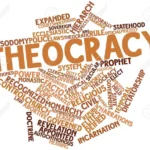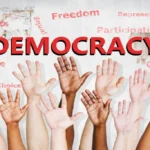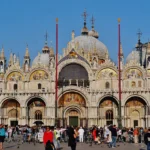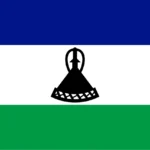
Elections are a cornerstone of democracy, shaping the political landscape and influencing the lives of citizens around the globe. From the ancient practices of voting to the modern-day innovations in electoral processes, there’s a wealth of intriguing information to uncover. In this post, we’ll explore fascinating facts about elections, including historical milestones, unique voting methods, and the evolution of voter participation. Whether you’re a history buff, a political enthusiast, or simply curious about how elections work, there’s something here for everyone. Let’s dive into the captivating world of elections!
In the United States, voter registration is managed at the state level, leading to significant variation in processes across the country. Only 13 states allow voters to register on Election Day, which can create confusion and barriers for potential voters. This decentralized approach means that some states have more accessible registration processes, while others may have stricter deadlines or requirements, impacting overall voter turnout and participation.
Canada has a unique approach to voter registration, allowing citizens to register at any time, including on Election Day. This flexibility enables voters to participate in elections without the fear of missing deadlines. When voters arrive at the polls, they can register and cast their ballots simultaneously, which often leads to higher participation rates and a more inclusive electoral process.
In France, the government automatically registers citizens to vote when they reach the age of 18, ensuring that young adults are included in the democratic process without requiring them to take any action. Similarly, in Sweden, eligible voters are automatically registered based on their tax registration information. These systems streamline the voting process and help maintain high levels of voter participation among young citizens.
Oregon made history by becoming the first and only state in the United States to implement automatic voter registration. This system automatically registers eligible citizens when they interact with state agencies, such as the Department of Motor Vehicles. By removing barriers to registration, Oregon aims to increase voter participation and ensure that more citizens have the opportunity to engage in the electoral process.
Some countries, including India, Greece, Ukraine, and Colombia, offer a “None of the Above” option on their election ballots, allowing voters to express dissatisfaction with all candidates. This option can encourage voter engagement by providing a legitimate way to voice discontent. In contrast, the United States only offers a “None of These Candidates” option in Nevada, highlighting the limited choices available to voters in many states.
Voter participation is mandatory in over 22 countries, where citizens are required to vote, and failing to do so can result in penalties such as fines or community service. This legal obligation often leads to higher voter turnout compared to countries where voting is voluntary, as citizens are motivated to fulfill their civic duty to avoid consequences.
In an unusual election in Picoza, Ecuador, a brand of anti-chafing foot powder surprisingly won the mayoral election in 1967. The company marketed its product by promising to improve hygiene and well-being for the townspeople. This case illustrates how unconventional campaigns can capture the public’s attention and influence electoral outcomes, even in unexpected ways.
Many countries, including Greece, Australia, and Brazil, schedule elections on weekends to encourage greater voter turnout. This practice contrasts with the United States, where elections are traditionally held on Tuesdays, a choice rooted in historical considerations. Holding elections on weekends can make it easier for working citizens to participate, as they may have more free time to vote.
The United States has one of the lowest voter participation rates among developed nations, with only 55.7% of eligible voters casting ballots in recent elections. This low turnout can be attributed to various factors, including complex registration processes, voter disenfranchisement, and a lack of engagement in the political process compared to other developed countries that often see much higher participation rates.
The “Bleeding Kansas” election of 1855 was marked by significant violence and controversy, as over 5,000 pro-slavery “Border Ruffians” entered the territory to sway the election in favor of pro-slavery legislation. This election is notable for the fact that the number of votes cast exceeded the number of eligible voters, raising questions about the legitimacy of the results and the influence of external forces on the democratic process.
A military coup in Algeria in 1991 abruptly canceled elections that were poised to bring significant political change, ultimately leading to the Algerian Civil War. This conflict resulted in a tragic loss of life, with estimates ranging from 44,000 to 150,000 casualties. The coup underscores the fragility of democracy in some regions and the potential consequences of political instability.
The 1927 general election in Liberia is often cited as one of the most corrupt elections in history. Charles D. B. King, seeking a third term as president, received approximately 234,000 votes, while his opponent garnered only 9,000, despite there being only 15,000 eligible voters in the country at that time. This glaring discrepancy highlights the extent of electoral fraud and manipulation that can occur in political systems.
In 1964, Haitian dictator François Duvalier, known as Papa Doc, sought to consolidate his power by asking to be elected as “President for Life.” He won an astounding 99.9% of the vote, a result achieved through coercion and manipulation, as all ballots were pre-marked “yes.” This election serves as a stark example of how authoritarian regimes can distort democratic processes to maintain control and suppress dissent.
In 1955, Vietnamese Prime Minister Ngô Đình Diệm printed election ballots on red paper, a color considered lucky in Vietnamese culture, while his opponent’s ballots were printed on green paper, deemed unlucky. This strategic choice contributed to Diệm’s victory, as he ultimately received more votes than there were registered voters. This incident illustrates how symbolism and cultural significance can be manipulated in electoral politics to influence public perception and outcomes.
The 1988 Mexican general election was marred by allegations of fraud when the government claimed that all computers had crashed just as the opposition party was leading. After a reboot, the ruling party miraculously regained its lead, raising suspicions about the integrity of the electoral process. Following the election, the government burned all ballots to eliminate evidence of the alleged fraud, highlighting the lengths to which authorities may go to protect their power and manipulate election results.
The quote attributed to Joseph Stalin, “The people who cast the votes don’t decide an election; the people who count the votes do,” underscores the critical importance of transparency and integrity in the electoral process. It reflects the idea that control over the vote-counting process can significantly influence electoral outcomes, emphasizing the need for fair practices and oversight to uphold democracy.
In Liechtenstein, one of the smallest countries in the world, the national community plays a direct role in the citizenship process by voting on whether an individual can become a citizen based on their skills and employment. This unique practice reflects the country’s commitment to involving its citizens in important decisions and illustrates how even small nations can engage their populations in the democratic process.
The 1872 United States election saw an unusual circumstance where President Ulysses S. Grant ran against Horace Greeley, who had passed away during the election period. Despite Greeley’s death, he remained on the ballot, and the election proceeded, resulting in a unique situation where a candidate was elected posthumously. This incident highlights the complexities and sometimes absurdities of electoral systems, particularly in the context of candidate eligibility.
Prior to 2012, South Carolina had a law prohibiting the sale of alcohol on Election Day, reflecting a historical attempt to ensure that voters remained sober and focused on their civic duties. Such laws were common in various states, stemming from concerns about voter behavior and the integrity of the electoral process. The repeal of this law indicates changing attitudes towards voting and the recognition of voters’ rights to make personal choices on Election Day.
In 1997, Texas passed a groundbreaking law that allowed American astronauts in space to cast their ballots electronically in federal elections. David Wolf became the first astronaut to vote from space while aboard the Russian Space Station Mir, marking a significant milestone in integrating technology into the electoral process. This initiative demonstrates the evolving nature of voting and the importance of ensuring that all citizens, regardless of their location, can participate in democracy.
George Washington, during his campaign, reportedly spent his entire budget of 50 pounds on providing 160 gallons of liquor to potential voters. This practice reflects the historical context of electoral campaigns, where candidates often used hospitality and gifts to win favor with constituents. It underscores how political campaigning has evolved over time and the various strategies employed to garner support.
The developed countries with the highest voter turnout rates are Belgium (87.2%), Sweden (82.6%), and Denmark (80.3%). These nations have implemented compulsory voting laws, which require citizens to participate in elections, resulting in significantly higher voter engagement compared to the United States, where only 55.7% of eligible voters typically cast their ballots. This disparity highlights the impact of legal frameworks on civic participation and the effectiveness of different electoral systems.
The modern electoral system began to take shape in the 17th century in Europe and North America, as governments transitioned to viewing themselves as representatives of individual citizens rather than estates, corporations, or vested interests. This shift marked a significant evolution in political thought and practice, laying the groundwork for contemporary democratic systems that prioritize individual rights and participation.
A concerning statistic reveals that over 45% of Africans surveyed reported experiencing threats of violence at polling places during elections. This alarming finding underscores the challenges faced in many regions regarding electoral integrity and the safety of voters. Ensuring secure and peaceful voting environments is crucial for fostering democracy and protecting citizens’ rights.
Secret ballots, a fundamental aspect of modern democratic elections, were not widely adopted in the United States until the 1890s. Prior to this change, voting was often public, which could lead to coercion and intimidation. The introduction of secret ballots aimed to protect voter privacy and encourage honest participation in elections, reflecting a growing recognition of the importance of safeguarding democratic processes.
Frequently Asked Questions about Election:
1. What is the purpose of an election?
Elections serve several key purposes in a democratic society:
- Representation: Elections allow citizens to choose their representatives in government, ensuring that their voices and interests are reflected in decision-making.
- Accountability: Regular elections hold elected officials accountable for their actions and policies. If constituents are dissatisfied, they can vote them out of office.
- Legitimacy: Elections provide legitimacy to the government by demonstrating that it has the consent of the governed.
- Participation: They encourage civic engagement and participation, fostering a sense of community and responsibility among citizens.
2. How do elections work?
Elections typically follow a structured process:
- Announcement: The election date is announced, and candidates declare their intention to run.
- Campaigning: Candidates campaign to inform voters about their platforms and persuade them to vote for them.
- Voting: On election day, registered voters cast their ballots, either in person, by mail, or through early voting options.
- Counting Votes: After voting ends, ballots are counted, and results are tabulated.
- Results: The results are announced, and the winning candidates are declared.
3. What are the different types of elections?
There are several types of elections, including:
- General Elections: These determine who will hold office in various levels of government (local, state, federal).
- Primary Elections: These are held to determine which candidates will represent a political party in the general election.
- Special Elections: These are called to fill vacancies that occur when an officeholder resigns or dies.
- Referendums: These allow voters to decide on specific policy issues or amendments to laws.
4. What is voter registration, and why is it important?
Voter registration is the process by which eligible citizens sign up to be able to vote in elections. It is important because:
- Eligibility Verification: It ensures that only eligible individuals can participate in elections, helping to maintain the integrity of the electoral process.
- Voter Turnout: Registered voters are more likely to participate in elections, which can lead to higher voter turnout and more representative outcomes.
- Access to Information: Registration often provides voters with information about polling places and voting procedures.
5. What are the voting methods used in elections?
Voting methods can vary by location and can include:
- In-Person Voting: Voters cast their ballots at designated polling places on election day.
- Early Voting: Some jurisdictions allow voters to cast their ballots before election day at specified locations.
- Absentee Voting: Voters who cannot be present on election day can request a mail-in ballot to vote by mail.
- Electronic Voting: Some areas use electronic machines for casting votes, which can streamline the counting process.
6. How can I find out who is running in an election?
To find out who is running in an election, you can:
- Visit Official Election Websites: Most states have official election websites that list candidates for upcoming elections.
- Check Local News Outlets: Local newspapers and news stations often provide coverage of candidates and their platforms.
- Use Voter Guides: Nonpartisan organizations often publish voter guides that include information about candidates and their positions on issues.
7. What is the Electoral College?
The Electoral College is a mechanism established by the U.S. Constitution for the indirect election of the president and vice president of the United States. Key points include:
- Elector Allocation: Each state is allocated a number of electors based on its representation in Congress (the sum of its Senators and Representatives).
- Voting Process: When citizens vote for president, they are actually voting for a slate of electors pledged to support their chosen candidate.
- Majority Requirement: A candidate must receive a majority of electoral votes (at least 270 out of 538) to win the presidency.
8. What are some common election-related terms?
Here are a few common terms:
- Ballot: The method by which a voter formally expresses their choice in an election.
- Incumbent: An individual currently holding office.
- Polling Place: The location where voters go to cast their ballots.
- Swing State: A state where both major political parties have similar levels of support among voters, making it a key target during elections.









